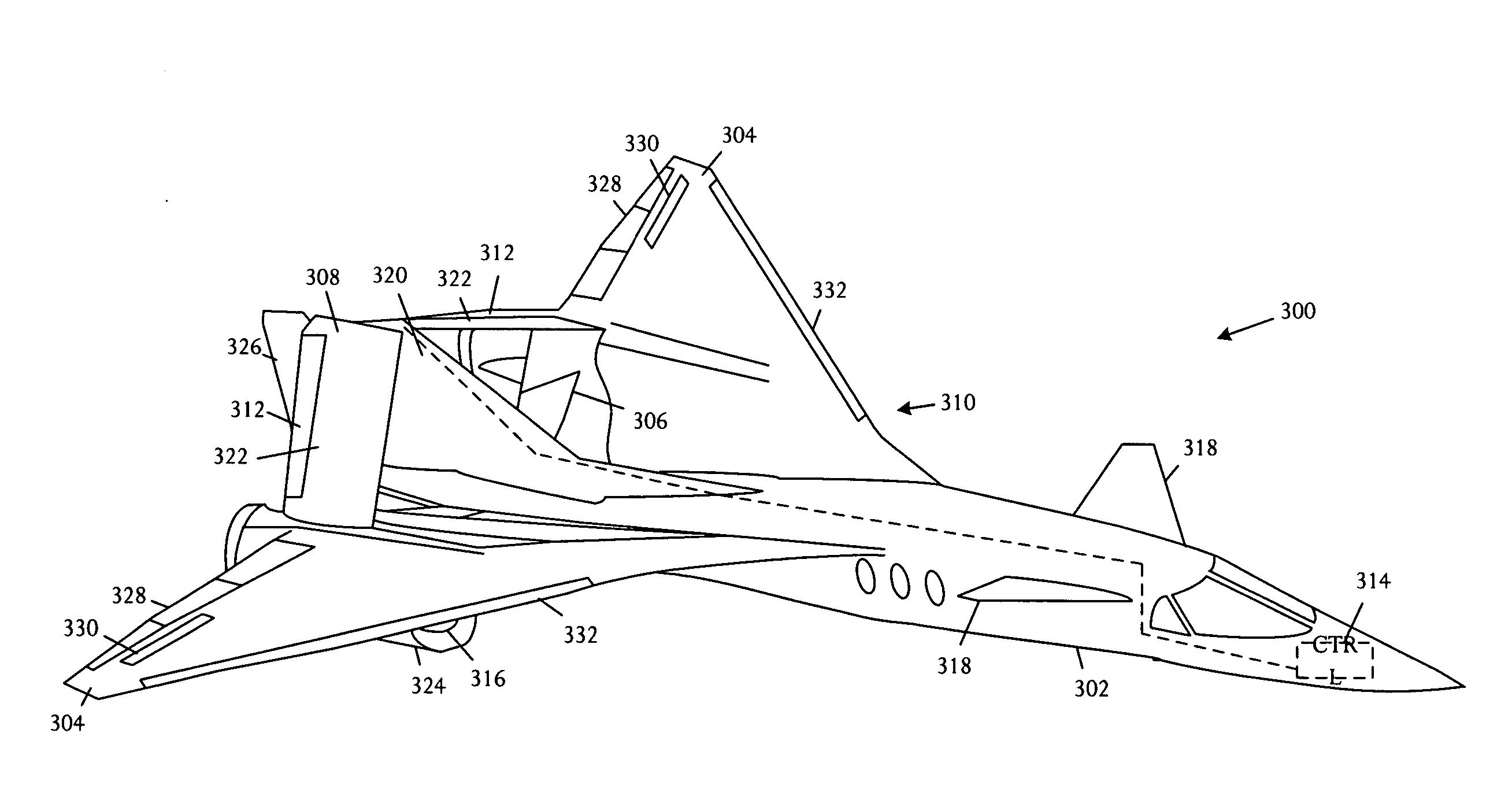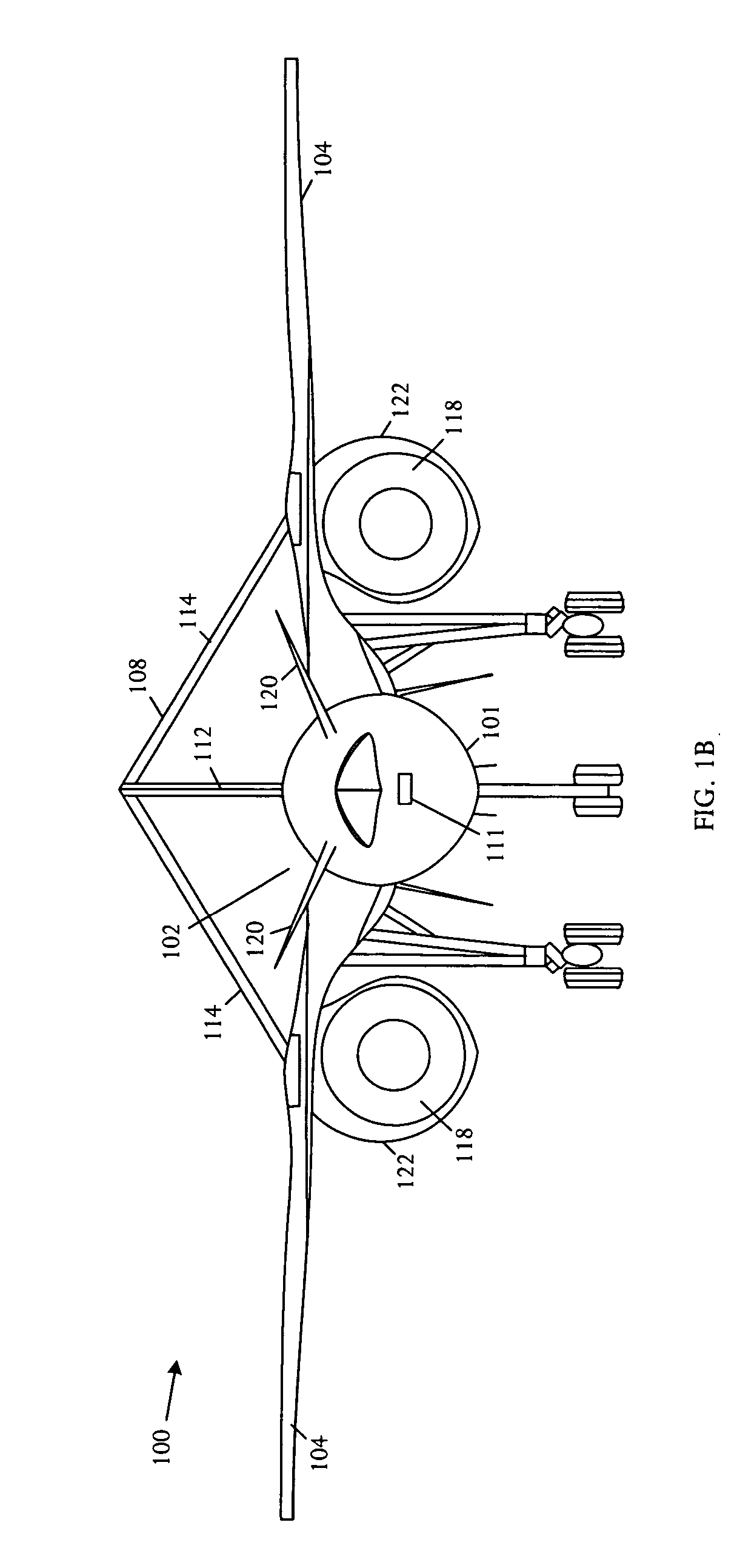Supersonic aircraft with channel relief control
- Summary
- Abstract
- Description
- Claims
- Application Information
AI Technical Summary
Benefits of technology
Problems solved by technology
Method used
Image
Examples
embodiment 100
[0027] The aircraft embodiment 100 further comprises engines 118 coupled to the aft portion of the wing lower surface with the inverted V-tail geometry empennage 108 coupled to the wing in the braced wing configuration carrying lift at the aft portion of the aircraft 100 on a high mounted tail 108. The length of the aircraft is effectively extended for shock waves below the aircraft 100, thereby further reducing sonic boom. The inverted V-tail 108 carries tail lift high to maintain a continuous lift distribution and structurally bracing the wing 104 and engines 118.
[0028] Referring to FIG. 1C, control effectors are shown for the supersonic aircraft 100. Two sets of surfaces are available for pitch control including canards 120 and ruddervators 116. Roll control uses ailerons 128 and high speed spoilers 130. Yaw control is supplied by a rudder 140, ruddervators 116, and differential canard 120.
[0029] In combination with the canards 120, the supersonic aircraft 100 has multiple stabi...
embodiment 900
[0062] Referring to FIG. 9, a schematic block diagram shows an example a flight control actuation architecture embodiment 900 that can be used to control effectors in the empennage to operate in a drag reduction mode and, conversely, to increase drag in operation as a speedbrake. In the illustrative example, primary flight control actuation uses “Fly-by-Wire” dual tandem linear hydraulics with triple electronic redundancy. Dual tandem actuation 902 is powered by two independent hydraulic systems 904 and 906 and sized for full rated performance based on a single system operation. The flight control system is closed-loop and commanded by the Vehicle Management Computers 908. The flight control system 900 performs control law implementations to produce aircraft handling qualities throughout flight. The system 900 can implement outer loop control modes such as Autopilot, Autolanding, and Auto collision avoidance control. The flight control actuation system 900 can also execute system in...
PUM
 Login to View More
Login to View More Abstract
Description
Claims
Application Information
 Login to View More
Login to View More - R&D
- Intellectual Property
- Life Sciences
- Materials
- Tech Scout
- Unparalleled Data Quality
- Higher Quality Content
- 60% Fewer Hallucinations
Browse by: Latest US Patents, China's latest patents, Technical Efficacy Thesaurus, Application Domain, Technology Topic, Popular Technical Reports.
© 2025 PatSnap. All rights reserved.Legal|Privacy policy|Modern Slavery Act Transparency Statement|Sitemap|About US| Contact US: help@patsnap.com



